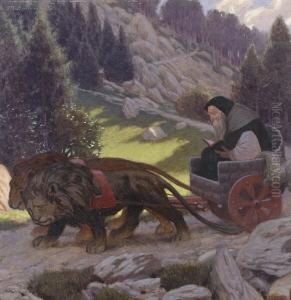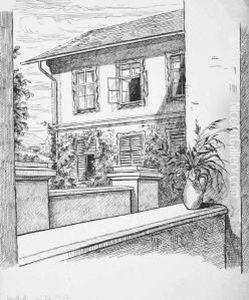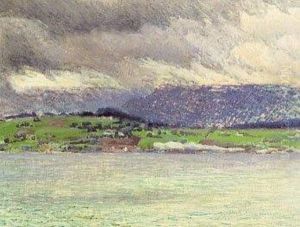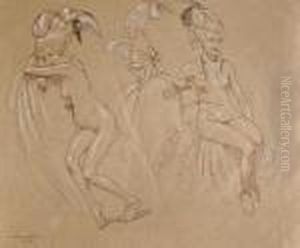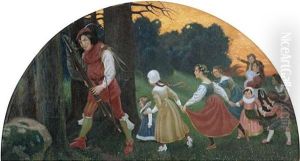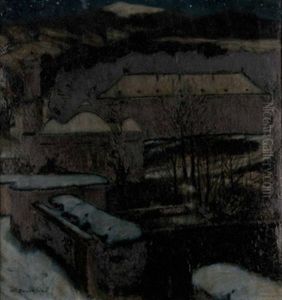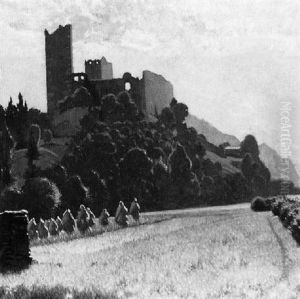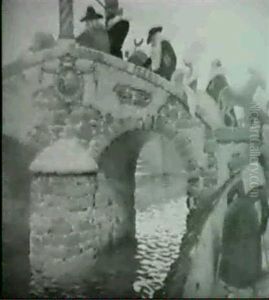Moritz Bauernfeind Paintings
Moritz von Schwind, whose full name was Moritz Ludwig von Schwind, was an Austrian painter, born on January 21, 1814, in Vienna. He is often confused with Moritz Daniel Oppenheim, another artist known as Moritz Bauernfeind, but it is von Schwind who is typically associated with the Romantic movement in art. Von Schwind's body of work is distinguished by its focus on fairy tales, legends, and allegorical subjects, often imbued with a sense of whimsy and fantasy.
Von Schwind received his initial artistic training at the Academy of Fine Arts Vienna but was largely self-taught, developing a unique style that set him apart from his contemporaries. Heavily influenced by German Romanticism, especially the works of his friend Ludwig Richter, von Schwind's paintings are characterized by their narrative quality and attention to detail, with a particular emphasis on the natural world and its mystical aspects.
In the 1830s, von Schwind moved to Munich, which was then a vibrant center for the arts under the patronage of King Ludwig I of Bavaria. Here, he became a central figure in the Munich School, a group of artists who sought to revive older art forms and techniques. While in Munich, von Schwind created some of his most important works, including a series of frescoes for the Hohenschwangau Castle depicting scenes from the operas of Richard Wagner, with whom he also maintained a friendship.
Von Schwind's work was not limited to canvas or fresco; he was also a skilled illustrator, contributing to various publications and producing designs for stained glass windows, tapestries, and other decorative arts. His illustrations for the fairy tales of the Brothers Grimm helped to shape the visual language of these stories for generations.
Later in his life, von Schwind returned to Austria and became a professor at the Academy of Fine Arts in Vienna. He continued to paint and contribute to the artistic life of the city until his death on February 8, 1887.
Von Schwind's legacy lies in his ability to capture the fantastical elements of folklore and legend while maintaining a sense of realism in his depictions of the natural world. His work is considered an important part of the Romantic movement and continues to be studied for its contribution to the development of narrative painting in the 19th century.
